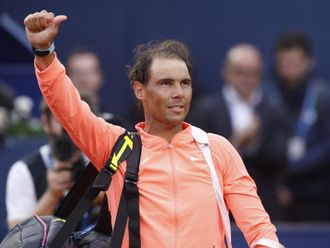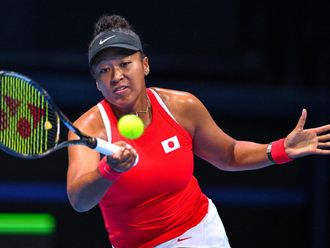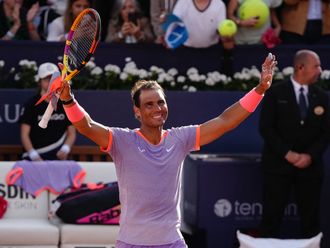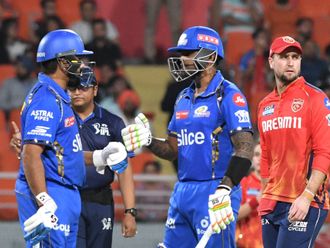New York: At 16, Petra Kvitova was already one of the best tennis players in her Czech Republic hometown. With other teens competing abroad, she had little opportunity to advance.
“I have two older brothers and my parents didn’t really have money to travel,” Kvitova, now 24 and a two-time Wimbledon champion, said in an interview. “We knew that if I wanted to play better, I had to move somewhere else.”
She left her family home to join the Prostejov Tennis Club 84 kilometres away, whose owner, Miroslav Cernosek, paid for her training and travel in return for a percentage of future earnings and endorsements.
The arrangement worked. Cernosek remains the business manager for Kvitova, who has won $15 million (Dh55 million) in prize money since turning professional in 2006 and is seeded third at this week’s US Open.
The Czech is one young player who found a way to handle the skyrocketing price of becoming an elite tennis professional. In addition to talent and desire, it might cost about $400,000 to develop a winning player from age 5 to 18, according to the British Lawn Tennis Association.
The payoff is huge: The singles winners at the US Open will collect $3 million each of the total purse of $38 million.
The International Tennis Federation said it costs $40,000 for a 17-year-old boy to compete on the junior circuit for 20 weeks a year, up 13 per cent from 2011. With prices like that, junior players are increasingly dependent on help from parents, national federations, sponsors or investors.
“Unless you are a very wealthy high-earner, or you’ve got someone backing your child, it’s almost impossible to afford such expenses,” said Phil Wright, father of 14-year-old British player Marco Daniel Wright.
Portugal Move
The Wrights moved to Portugal to help pay for their son’s career. At the national level in the UK, Marco needed to play international junior tournaments to boost his ranking. Instead of attending a West London tennis academy — where the family was quoted an annual fee of $42,000 — he now trains at a tennis club in Lisbon for less than one-sixth of that.
“Now that my son has become this good, and he has the opportunity to go to another level, the cost of getting to that level is ridiculously high in England,” said Phil Wright, a former semiprofessional soccer player who runs a technology recruitment agency.
With the cost of playing on the pro tour estimated to be $143,000 a year, according to a 2010 study by the US Tennis Association, there are plenty of players from privileged backgrounds. Eugenie Bouchard, who lost to Kvitova in this year’s Wimbledon final, is the daughter of a Canadian banker. French Open men’s semifinalist Ernests Gulbis is the son of a Latvian millionaire.
Murray’s Expense
Judy Murray, the mother of 2013 Wimbledon champion Andy Murray and Britain’s Fed Cup coach, knows all about spiralling costs. Her elder son, Jamie, also plays pro tennis, and is currently ranked 31st in the world in doubles.
“When you get to the competitive stage in tennis, it does become expensive,” Judy Murray said. “You have to travel quite long distances to get decent competition.”
Getting more kids to play the game may reduce the financial burden for parents, since local competition would cut down on travel, she said.
“We have to build more public facilities to get more people playing,” Murray said. “We need to build a bigger and stronger workforce right across the board, not just at the grassroots level but at performance level as well so that when more kids are starting to come through, we actually know what we’re doing with them.”












